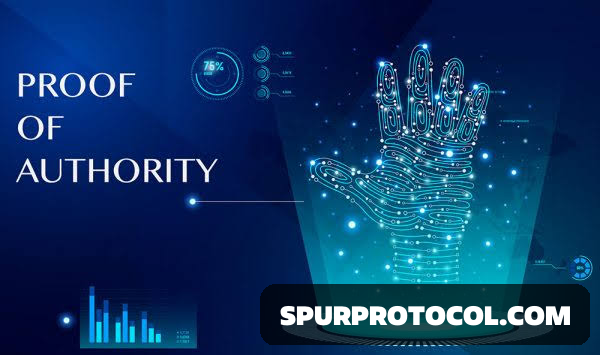What Is Proof-of-Authority
It's a consensus system that allows only authorized entities to validate transactions in a blockchain network.
How Proof Of Authority works
- Unlike proof of stake, the validators in this case are 'elected' or are predetermined. this means that no one can join without disclosing their identities.
- These Validators run software to put transactions in blocks.
- The process is automated and does not require validators to constantly monitor their computers.
- The authority of a miner can vary from 0% to 100%. Initially, conditions for each validator are the same.
- That is, if you become a validator, you can have a greater influence on the network than some major bank.
- Each transaction requires the participation of at least two nodes with greater authority than the initial node.
Example: if the initial influence is 40%, then the other two should have 40% +.
Terms and conditions for Proof of Authority
1. Validators should have good moral standards to validate their credibility, and they should not have any criminal records.
2. The identity of a validator must go through formal validation on the network, with the ability to cross-check information in public domain. Therefore, the real identities of the authorities are confirmed on the network.
3. Validator candidates should have the commitment to investing money and staking their identity on the Proof of Authority blockchain network.
- The rigorous process of selecting a preapproved validator ensures reduced possibilities of choosing controversial validators.
- The validator selection process ensures long-term commitment from validators.
Advantages of Proof of Authority
1. Efficiency
PoA is highly efficient, as it doesn’t require the energy-intensive mining process seen in PoW or the extensive staking capital of PoS.
2. Speed
Transactions on PoA networks are fast and have low latency due to the predefined set of validators and their quick validation process.
3. Security
The reputation and identity of validators make PoA networks resilient against Sybil attacks and other malicious activities.
4. Governance
PoA networks are often used in private or consortium blockchains where governance is essential.
- Validators can make decisions collectively based on the network’s requirements.
5. Scalability
PoA networks can scale efficiently since the number of validators is not limited by resource constraints as seen in PoW or PoS.
Limitations and Criticisms
1. Centralization of Power
Control rests with a small group of validators. This concentration makes it less resistant to censorship or collusion compared to distributed consensus models.
2. Trust Requirement
Users must trust a central authority to act honestly. If a validator is compromised or turns malicious, they could harm the entire network. PoA depends on personal integrity.
3. Censorship and Immutability Concerns
With fewer validators, it’s easier to filter or revert transactions. External pressure or internal agreement could lead to censorship undermining the network’s integrity and challenging the idea of immutability.
4. Validator Targeting
Known identities create risk. Validators can be singled out for bribes, coercion, or attacks. By contrast, anonymous actors in PoS networks are harder to target individually.
5. Perception and Incentives
Some see PoA as lacking strong incentives. Validators might not be properly motivated if they’re unpaid or acting out of goodwill.
- Also, many in the crypto community view PoA as less decentralized potentially limiting adoption in open ecosystems.

